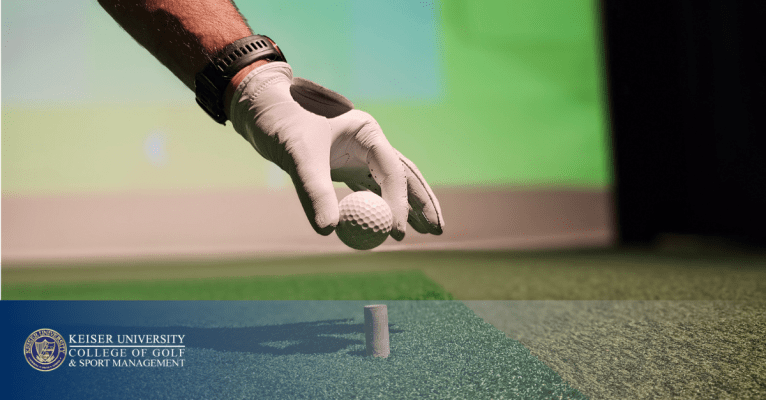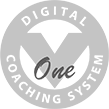The Evolution of Instruction in College Golf Programs

Just as the game of golf has evolved in nearly six centuries it’s been around, so have the instruction methods and techniques used to help players improve their games. Whether you’re interested in a career as a golf coach or simply want to explore new ways to sharpen your skills, understanding how instruction in college golf programs has changed over time may better prepare you to achieve your goals on the course or in the collegiate landscape.
Historical Perspective
In the early days of golf and through much of the 1900s, golf instruction in college programs mostly revolved around golf coaches carefully observing players and offering verbal feedback on their mechanics, swing, and other technical areas of the game. Because there wasn’t much in the way of technology to help golfers refine their skills, they relied heavily on feedback and mentorship directly from their instructors on the course.
Mentoring also played a pivotal part in golf coaching and instruction during this period. Centuries ago, it was not uncommon for golfers to be mentored by members of their own family who played golf professionally (as was the case with Tiger Woods and his father) or even a skilled amateur who played in the same clubhouse. Although mentorship remains important today, numerous other instructional techniques and technologies exist to help players improve their games.
Technological Advancements in Golf Training
Over the years, new technologies began to emerge that changed the way instructors did their jobs. For example, the first golf simulators started to hit the market in 1970, making it possible for players to practice just about every aspect of the game without setting foot on a real course. These technologies were integral to helping instructors provide more detailed feedback while giving players the unique opportunity to continuously practice and refine specific skills.
The use of video analysis has become popular in golf instruction as well. Coaches and instructors would tape their students and review the footage with them separately, allowing players to see firsthand areas where they needed to improve to refine their technique.
Today, instructors can even take advantage of digital tools and apps, ranging from dedicated swing analysis software to 3D motion analysis programs as a means of further assessing players’ skills and making recommendations for improvement.
Incorporating Sports Science
As sports science began to take off in the mid-1900s, so did its applications in the world of golf. Specifically, golf science concepts and techniques have enabled instructors to guide players in improving their performance and reducing the risk of injury.
Sports science in golf involves applying concepts like physics, biomechanics, and physiology to enhance performance and boost overall endurance. As instructors began applying sports science concepts to golf, it became feasible to pinpoint how small mistakes in a golfer’s movements (such as during a swing) could impact everything from ball trajectory to a player’s likelihood of being injured.
In collegiate golf training today, golf instructors and coaches rely on specific strength and conditioning exercises to help golfers improve their overall fitness and thus reduce the risk of common injuries (including golfer’s elbow, tendinitis, and disc herniations). Instructors may also guide players in building tailored nutrition plans, fitness regimens, and even mental conditioning for golfers based on player physiology and other factors.
The Rise of Analytics in Golf Instruction
Today, it seems every industry is relying on data more heavily than ever before — and golf is no exception. In golf instruction specifically, data analytics makes it possible for instructors to provide players with valuable insights and recommendations for improvement that they can see, understand, and act upon. More than ever, golf coaches rely on analytics and statistics to track player progress and make critical coaching decisions.
Some examples of the most common data and performance metrics tracked in modern golf instruction include:
- Swing speed
- Launch angle
- Putts-per-round
- Ball spin
Likewise, instructors may rely on data analytics to show players evidence of their performance as it changes. This, in turn, can help golfers stay motivated to improve and remain open to suggestions from their coaches. In more recent years, technology has even enabled instructors to use data and golf performance analytics to provide tailored recommendations for equipment fitting.
For instance, an instructor may rely on swing path and face angle data to determine which type of driver may be most suitable for a particular player. In this sense, golf data analytics could help instructors optimize player performance.
Blending Traditional and Modern Techniques
The world of golf instruction is a long shot from what it looked like even just a few decades ago. Rather than relying on direct observation, feedback, and mentorship, today’s instructors are using more tools and technologies than ever before to help golfers improve their game.
So, what type of instruction method is best? The reality is that there is no one-size-fits-all answer, as golf instructors and coaches must constantly evolve and adapt their methodologies to suit their students’ unique needs. At the same time, what many college-level golf instructors are finding is that there’s a “happy medium” somewhere between traditional, hands-on coaching and modern technology. The key is to know when to rely on those tools and technologies — as well as when to take a step back and apply a more direct approach.
At Keiser University College of Golf, we’ve been developing our golf instruction techniques and meticulously refining them over the years to provide students with the guidance and mentorship they need to succeed. We’ve learned a lot, and our instructors have been among the first to leverage many new tools and technologies as they have emerged in the field.
This experience has led us to where we are today: providing tailored instruction to aspiring golf professionals and industry leaders by seamlessly integrating hands-on and technology-based approaches.
The Future of Golf Instruction in Colleges
Only time will tell what the future of golf instruction looks like, but we’ve already begun to see hints at what the next wave of golf coaching innovations may bring.
You’d be hard-pressed to find an industry that hasn’t been impacted in at least some way by artificial intelligence (AI) over the past few years, including golf. In the coming years, there will likely continue to be more adaptations of AI and machine learning in golf instruction — even at the college level. For example, AI-powered tools (such as Sportsbox 3D Studio) and launch monitors (such as the innovative Foresight Sports GCQuad Max) may make it possible for players to receive personalized and detailed feedback on everything from their body movements during a golf swing to more strategic insight.
The real kicker with these emerging technologies, of course, is that much of the feedback and guidance is automated. What does this mean for the role of the golf instructor, then? Will these professionals ultimately be replaced by AI? This is highly unlikely, as there remains a need for knowledgeable and skilled instructors who understand the nuances of the game and are ready to adapt their instruction to a player’s specific goals and skill level.
Regardless, however, future golf instructors and coaches should become familiar with these technologies as they emerge, as they will likely be expected to use them in their own work. To remain relevant and competitive in the field, golf instructors must be prepared to stay on top of emerging trends and adapt to new technologies at any given moment. This sense of adaptability and continuous learning can take instructors and their players further in their careers.
Learn More in a Golf Management Program
Golf instruction techniques have evolved significantly over time, from the earliest days of form and swing mechanics to more recent technological advancements. Despite the various changes that have led us to modern golf instruction, one fact remains the same: Instructors, mentors, and coaches care to leave a lasting and positive impact on their students.
If you’re looking to make a difference as a golf instructor or coach, interested in managing a golf course, or keen on integrating golf into the hospitality or recreation work sectors, it could be time to earn a degree from Keiser University College of Golf. We proudly offer a wide range of golf programs, including a Master of Science in Golf Teaching and Learning for those aspiring to advance their skills as golf instructors or be a part of the larger golf industry.
Learn more about any of our programs by getting in touch today. Ready to take a swing at your degree in golf? Start your online application today.
Want more tips? If you want to take your game to the next level, contact our team at Keiser University’s College of Golf & Sport Management today. With our dedication and experience, together, we can elevate your game to new heights. Give us a call today at 888-355-4465.
Sources
https://collegeofgolf.keiseruniversity.edu/why-the-college-of-golf/
https://collegeofgolf.keiseruniversity.edu/programs/golf-teaching-and-learning-ms/
https://www.sportperformanceanalysis.com/article/increasing-presence-of-data-analytics-in-golf
https://pubmed.ncbi.nlm.nih.gov/16464124/
https://www.foresightsports.com/products/quadmax-launch-monitor
https://www.golfmonthly.com/buying-advice/best-golf-swing-analyzers-year
https://www.golfdigest.com/story/evolution-of-golf-simulators
https://www.theopen.com/latest/2020/04/tigerwoodschroniclesunseen














